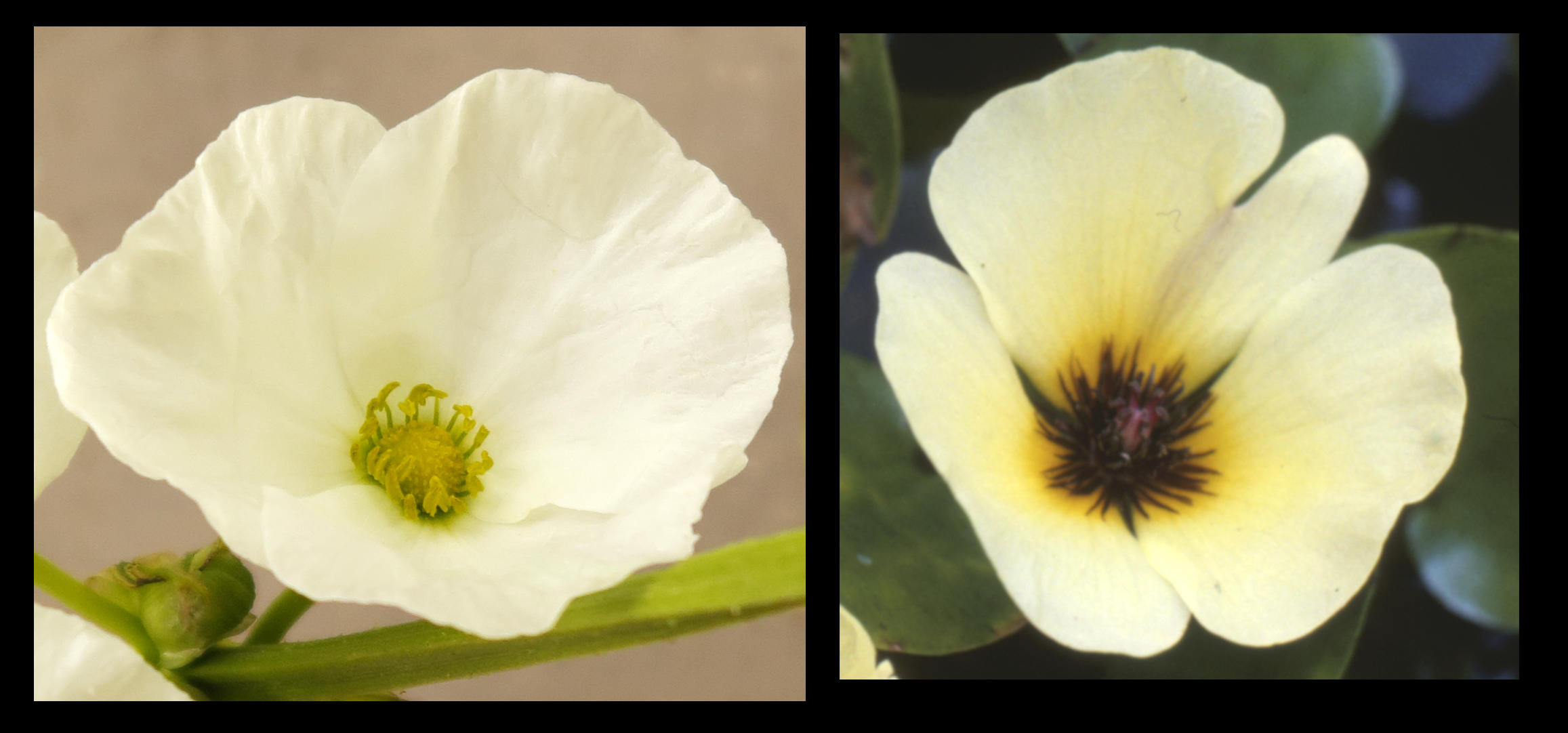Alismataceae.
The Water-Plantain family has around 18 genera and 90 (80 to 120) species.
The mostly perennial herbs grow in water or marshy conditions.
The underground stem can be a corm, stolon or rhizome.
Plants can float on the water or be above or in it.
The simple leaves are spirally arranged in a basal rosette.
They have a petiole whose base forms a sheath on the stem.
Many have different juvenile and adult leaves.
The juvenile ones are linear while the adult ones are linear to ovate and sometimes
triangular with basal lobes that may point back or outwards.
Inflorescences may be a single flower but most are branched or unbranched clusters.
In some all the flowers are attached near the end of the stem (umbel-like) while others
have flowers in whorls along the stem &/or the branches.
Flowers are bisexual or when unisexual they can be on the same or different plants.
They are on a short or long pedicel with a bracteole at the base.
Flowers have three free, green sepals that usually persist in the fruit.
The 3 free petals only last a day or so.
They can be white, purple or pink sometimes with a basal spot.
There are 6 or 9 (3 or many) stamens.
They may be free or joined at the base in pairs or in small bundles.
The anthers open sideways or outwards through long slits.
The superior ovary may consist of a single carpel or many free ones.
Each has 1 to many ovules with basal placentation.
The fruit are aggregates of the dry achenes or follicles formed from each carpel.
(Achenes are small indehiscent fruit with one seed.
Follicles are dehiscent fruit that open along the suture to which the seeds are attached.)
J.F.


